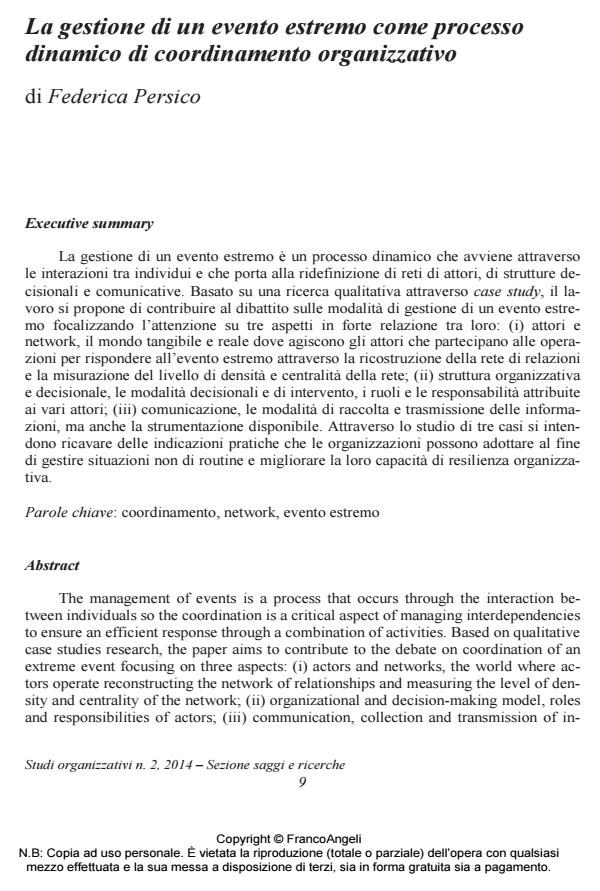La gestione di un evento estremo come processo dinamico di coordinamento organizzativo
Titolo Rivista STUDI ORGANIZZATIVI
Autori/Curatori Federica Persico
Anno di pubblicazione 2015 Fascicolo 2014/2
Lingua Italiano Numero pagine 33 P. 9-41 Dimensione file 1141 KB
DOI 10.3280/SO2014-002001
Il DOI è il codice a barre della proprietà intellettuale: per saperne di più
clicca qui

FrancoAngeli è membro della Publishers International Linking Association, Inc (PILA)associazione indipendente e non profit per facilitare (attraverso i servizi tecnologici implementati da CrossRef.org) l’accesso degli studiosi ai contenuti digitali nelle pubblicazioni professionali e scientifiche
La gestione di un evento estremo è un processo dinamico che avviene attraverso le interazioni tra individui e che porta alla ridefinizione di reti di attori, di strutture decisionali e comunicative. Basato su una ricerca qualitativa attraverso case study, il lavoro si propone di contribuire al dibattito sulle modalità di gestione di un evento estremo focalizzando l’attenzione su tre aspetti in forte relazione tra loro: (i) attori e network, il mondo tangibile e reale dove agiscono gli attori che partecipano alle operazioni per rispondere all’evento estremo attraverso la ricostruzione della rete di relazioni e la misurazione del livello di densità e centralità della rete; (ii) struttura organizzativa e decisionale, le modalità decisionali e di intervento, i ruoli e le responsabilità attribuite ai vari attori; (iii) comunicazione, le modalità di raccolta e trasmissione delle informazioni, ma anche la strumentazione disponibile. Attraverso lo studio di tre casi si intendono ricavare delle indicazioni pratiche che le organizzazioni possono adottare al fine di gestire situazioni non di routine e migliorare la loro capacità di resilienza organizzativa.
Parole chiave:Coordinamento, network, evento estremo
Federica Persico, La gestione di un evento estremo come processo dinamico di coordinamento organizzativo in "STUDI ORGANIZZATIVI " 2/2014, pp 9-41, DOI: 10.3280/SO2014-002001